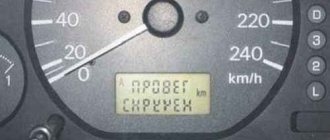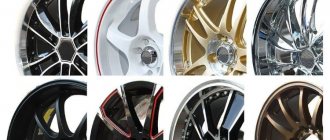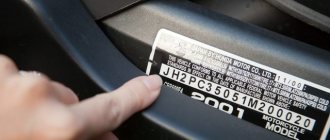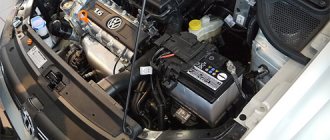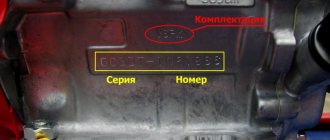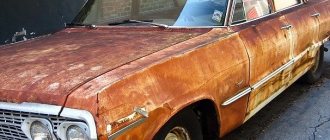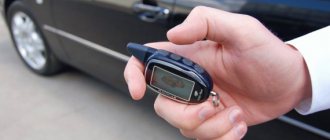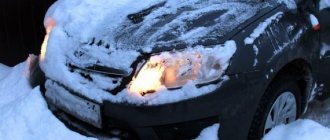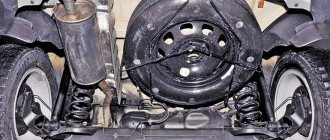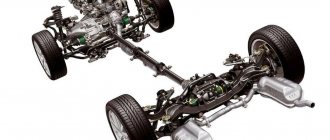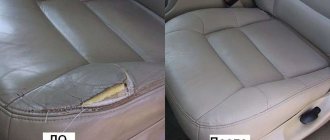1. World Manufacturers Identification (WMI) - world manufacturer index. It contains all the information about the car manufacturer and is assigned by the country where the company that produced the car is located and registered.
- Country of manufacture is the first character;
- The vehicle manufacturer is the second character;
- Manufacturer's division is the third character;
2. Vehicle Description Section (VDS) - this part contains 6 characters; they describe most of the individual features of the car. How and in what order to arrange the symbols in this part is determined by the manufacturer himself, as well as its semantic component.
3. Vehicle Identification Section (VIS) - this part of the VIN code encrypts all the distinctive features of the car. It consists of 8 characters, the last 4 must be numbers, since they indicate the year the car was built.
However, if you have a car of the brand Audi, Isuzu, Hyundai, Jaguar, KIA, Nissan, Opel, Peugeot, Renault, Rover, Saab, Toyota, Volvo, Volkswagen, the last 4 characters are designated by numbers according to the standard, and European and Japanese manufacturers such as Mercedes-Benz, Peugeot, Toyota may not indicate the year of assembly of the car at all.
Compliance with the ISO 3779 standard is advisory in nature; different manufacturers themselves choose what to indicate in the VIN code, some do not indicate the place of assembly and years of manufacture. This is why some VIN codes are difficult to decipher.
Where is the body number?
This data contains information about the manufacturer. The body number is a code consisting of letters and numbers in different quantities, which depends on the specific manufacturer. Its length can be from 9 to 12 characters. The first 4-6 characters tell about the type and make of the car body. The remaining 5-8 are the serial number of a particular car.
These alphanumeric combinations may not always coincide. And before you find out where the body number and VIN code are located, you should understand the differences between them in order to avoid misunderstandings with traffic police officers.
In recent years, everything has changed and improved, which helps to simplify the life of modern people to some extent. So in the automotive industry, the VIN code is gradually replacing the body number. To date, 24 producing countries have abandoned the latter in favor of the former. It is important to know that if a car has 17 characters, this already includes the body number.
Meanwhile, these numbers and letters may differ, which leads to no less surprise to the car owner than their complete coincidence. Most often you can see this phenomenon on foreign cars. Confusion arises due to the fact that the body number may be foreign, and the VIN code may be Russian. In any case, you shouldn’t worry and panic ahead of time.
Information of this kind can be found on the manufacturer's plate and on the body itself in the engine compartment. In some cases, it is located under the front seats, or on the windshield in a special window.
To decipher these symbols, there is a special table by which you can identify them. You can view such a table here –{amp}gt;{amp}gt;.
Galvanic galvanization
This method of applying zinc has been known for a very long time. Each automaker has its own secrets. The manufacturers of Mercedes and BMW cars managed to invent a successful galvanizing composition. The thickness of the galvanized layer on the car body is 9-15 microns. Metal galvanized in this way can compete with Audi in terms of rust resistance. After galvanization, the metal becomes smooth and paint adheres perfectly to it.
Cars from Japan are not the best in terms of anti-corrosion. On cars from Honda Legend, Pilot, Honda, CR-V, only some galvanized elements are installed: these are, as a rule, bottoms, sills and fenders.
What a standard car VIN code should look like:
- The VIN code in any documents should always be written on one line without spaces;
- On a car body, the VIN code can be written in one or two lines (in 90% of cases it is written in 1 line), but it must also be without spaces. WMI, VDS, and VIS groups cannot be separated during migration;
- Remember that the VIN code consists of letters and numbers, however the last 4 characters must ALWAYS be numbers;
- The code allows Latin letters except the letters I, O, Q. More details about allowed/not allowed characters in the picture below.
Checking vin by carfax
This site has a permanent connection to American car databases - CARFAX And AutoCheck. In common parlance these bases are called “ carfax" And "autocheck" respectively. These databases contain detailed information on all vehicles that were registered in the United States and Canada. Knowing the vin code of the car, you can find out the detailed history of the car from the moment it was manufactured at the factory until the moment it left the territory of the USA or Canada. Using this site, it is possible to check the vin number of not only cars from American manufacturers, but also any other ones, since a huge number of cars are imported into the USA and Canada from Europe, Japan and other countries. In databases CARFAX And Autocheck there is data on all cars produced after 1981. The VIN code of such vehicles must be 17 characters long. If the vin code of the car being tested is more or less than 17 characters, then the car was released before 1981 or perhaps you wrote it down incorrectly.Quite often it is possible to obtain additional information and photographs of a car from the Copart auction database by vin number. Typically, the Copart database offers 10 photographs of the vehicle from different angles. Photos taken prior to sale at Copart Auto Auction . In addition to photographs, information is provided about the cost of the car, cost of repairs, color, date of sale, etc. For some vehicles there is only additional information and no photographs.
If the car was ever sold at a Manheim auto auction , you can try to find it in the corresponding database. The Manheim auction database provides photographs of the car (if available), information about the sale, equipment, damage, and more. Manheim data CARFAX and Autocheck database reports .
The result of checking the vin code is issued automatically in Russian and English. The cost of one check based on CARFAX , AutoCheck , Copart or Manheim is:
- $4.75 when paying using any mobile phone (by sending SMS).
- 99 rub. when paying with WM cards (you can buy a payment card at the metro, in a store, or order a card delivered to your home) or electronic money.
Thank you for your interest in vehicle history reports. We offer you various payment options. The most profitable option for you is to pay using WM cards, and the most convenient is to pay using SMS sent from any mobile phone.
So, as you can see, checking the VIN of a US car is not difficult. The following payment options are available to you : CARFAX , Autocheck , Copart and Manheim :
| Buy a WM card in a store, near the metro, or order delivery of the card to your home (office). Ask the seller for a “WebMoney” card (WM card) - in rubles or dollars. WM cards in rubles come in denominations of 500, 1000, 3000 and 5000 rubles. (enough for 5,10, 30 and 50 reports). WM cards in dollars come in denominations of 10, 20, 50 and 100 dollars (enough for 2, 5, 13 and 26 reports). Please note that to pay for the “ vin check on vinvin.ru ” service, this method is the most preferable, since it costs you only 99 rubles. |
| Electronic money WebMoney (WMR, WMZ, etc.) or Yandex.Money. pay for CARFAX , AutoCheck , Copart and Manheim reports using popular electronic currencies. If you still do not have electronic wallets in these systems, we recommend that you create them, since with the help of electronic money you can not only pay for online purchases, but also real goods, utility bills and much more. |
| Electronic money Moneymail, RBK Money, Single Wallet. These payment methods also allow you to pay for CARFAX , AutoCheck , Copart and Manheim and instantly receive them on your computer. |
| Using the Contact fast transfer system. |
| Using QIWI wallet. A convenient and fast way to pay for CARFAX , AutoCheck , Copart or Manheim . |
| Using bank cards of international payment systems VISA and MasterCard. Payment is made through a secure payment gateway on the bank’s website. |
| Using a bank card from any bank or in cash at VTB24 Bank ATMs. |
| Using the Telebank Internet banking system, for VTB24 bank clients. |
| Using the Alfa-Click Internet banking system, for Alfa-Bank clients. |
The procedure for deciphering the VIN code by numbers
The VIN code never contains the Latin alphabetic characters “I”, “O” and “Q” due to some similarity with the numbers “1” and “0”.
Decoding the VIN code yourself is a rather labor-intensive process.
The VIN number shown in the picture below will be used as an example of decoding.
The positions of the VIN code must be deciphered strictly in order.
1 - country
The first position in the VIN code always indicates the country of manufacture of the car. In other cases, several characters are used to identify the country.
There are a lot of codes designating regions, but the most common are:
- 1, 4 and 5 - United States of America;
- 2 - Canada;
- 3 - Mexico;
- J - Japan;
- K – Korea;
- S – Great Britain;
- W – Germany;
- Z – Italy;
- Y – Sweden;
- X – Russia, the Netherlands and Uzbekistan;
- 9 – Brazil.
In the picture, the first character is X, the country of origin is Russia, the Netherlands or Uzbekistan.
The next two positions show the vehicle manufacturer.
The codes of many international companies consist of several characters. Like country identification, plant identification may require all three characters.
The picture shows two 7L symbols; you have to search using all three symbols X7L—Renault AvtoFramos (Russia).
The Renault concern has many factories: MEE - India, VF1, VF2, VF6 (trucks) and others. For example, AVTOVAZ has the code XTA.
To designate a manufacturer producing less than five hundred vehicles per year, the number nine is indicated in the third position.
The fourth to eighth characters describe the various characteristics of the vehicle and its type:
- the lineup;
- body type;
- drive unit;
- engine;
- transmission;
- steering wheel locations and others.
Each car manufacturer has its own set of characteristics, its own unique designations.
We will consider according to the classification for Renault assembled in Russia.
Body type:
- C or 3 - three-door hatchback;
- B or 5 - five-door hatchback;
- S or 6 - five-door combi;
- K or A - three-door station wagon;
- E or 7 - two-door convertible/truck with sides;
- D or 8 – two-door coupe/convertible;
- J or N - five-door station wagon/minivan;
- U or H - pickup;
- M or 2 - two-door sedan;
- L or 4 - four-door sedan.
In our case, the first letter L denotes the vehicle body type—sedan.
A number of models presented in Russia are encrypted in the fifth position:
- A - Megan I;
- B – Clio II;
- C – Kangoo;
- D – Master;
- G – Laguna II;
- L – Traffic;
- M – Megan II;
- S – Logan;
- Y – Koleos.
The fifth position in our case indicates the S – Logan model range.
The sixth and seventh positions for this example indicate the engine code - RB, in the example under consideration the KJ7 engine - engine capacity 1.4 liters, eight-valve.
In the eighth position is the territorial location of the plant that produced the vehicle.
Cars that came off the Avtoframos assembly line have the same code as Turkish vehicles - 2.
Most automobile concerns use a symbol in the ninth position to check the check digit, which is calculated: all numbers and Latin letters (each letter is assigned its own digital value) in each position of the VIN code are multiplied by the position number code (multiplier), with the exception of the check digit, and the sum of the products all positions are divided by eleven.
If the remainder in the received response is similar to the control value, the VIN code is real.
Digital values of VIN letters: A=1, B=2, C=3, D=4, E=5, F=6, G=7, H=8, J=1, K=2, L=3, M =4, N=5, O=6, P=7, R=9, S=2, T=3, U=4, V=5, W=6, X=7, Y=8, Z=9 .
Position code (multiplier): 1st=8, 2nd=7, 3rd=6, 4th=5, 5th=4, 6th=3, 7th=2, 8- 1st=10, 9th=0 (check digit), 10th=9, 11th=8, 12th=7, 13th=6, 14th=5, 15th=4, 16th=3, 17th=2.
The symbol in the tenth position indicates the year of manufacture of the vehicle.
Not every vehicle manufacturer follows this regulation.
| Code | Year of issue | Code | Year of issue |
| A | 1980 | X | 1999 |
| IN | 1981 | Y | 2000 |
| WITH | 1982 | 1 | 2001 |
| D | 1983 | 2 | 2002 |
| E | 1984 | 3 | 2003 |
| F | 1985 | 4 | 2004 |
| G | 1986 | 5 | 2005 |
| N | 1987 | 6 | 2006 |
| J | 1988 | 7 | 2007 |
| TO | 1989 | 8 | 2008 |
| L | 1990 | 9 | 2009 |
| M | 1991 | A | 2010 |
| N | 1992 | IN | 2011 |
| R | 1993 | WITH | 2012 |
| R | 1994 | D | 2013 |
| S | 1995 | E | 2014 |
| T | 1996 | F | 2015 |
| V | 1997 | G | 2016 |
| W | 1998 | N | 2017 |
| J | 2018 |
In our case, the tenth character is E - 2014 year of manufacture of the vehicle.
The eleventh character most often indicates the code of the plant that assembled the vehicle.
However, there are no general rules for designating this position.
From the twelfth to seventeenth positions is the serial number of the vehicle. The last four positions are always indicated by numeric characters.
For many vehicle owners, this information is not interesting. But for exclusive cars, these numbers are important - the smaller the production run and the smaller the serial number of the vehicle, the higher the cost of the rare vehicle.
In our case, the serial number of the vehicle is 742011.
Any VIN code is deciphered from left to right in the order of numbers, starting from 1 to 17 characters.
VIN number for a foreign-made car
In order to better protect a vehicle from theft, manufacturing plants of both domestic and foreign cars duplicate numbers in several places on the vehicle. For example, on American cars you can most often see the VIN on the windshield, where it touches the hood. The Americans also duplicate it on the nameplate in the driver's door opening or in other areas of the body.
On German cars, as in the case of Russian cars, the location depends on the year of manufacture. Especially when it comes to BMW. If we take the “troika” in the back of the E36 as an example, then there are as many as 13 possible places for applying the VIN code, starting from the bumper beam under the decorative panel and ending with the frame of the front seats.
On Asian cars, the number is most often located on a plate located on the lower part of the B-pillar of the driver's doorway. Traditional application areas also include the cylinder head and engine compartment. The same answer can be given to car owners who are interested in where the body number is located on Renault and other European-made brands. Especially if the car is new. In this case, if it is not in the window on the windshield, the easiest way is to look in the doorway or under the hood.
- Africa – ABCDEFGH;
- Asia – JKLMNPR;
- Europe – STUVWXYZ;
- North America – 1 2 3 4 5;
- Oceania – 6 7;
- South America – 8 9 0;
How to choose a car with a galvanized body
Anyone who decides to buy such a car must be able to choose the car model wisely, because galvanized vehicles are coated with zinc in different ways: some models can be completely protected from rust, others only have individual elements protected, and others are only coated with a primer containing a tiny amount of primer. zinc
The following car brands are covered with very high-quality galvanization: Volkswagen, Porsche, Audi, Skoda, Seat, Volvo, Chevrolet, Opel, Ford, Mercedes, BMW. Honda Legends, Pilot, Honda CR-V have galvanized only the bottom, fenders and sills. Car manufacturers of the Lada, Chery, Gil, and Khuntoi brands use zinc in the primer. The quality of galvanization of a vehicle and, naturally, its price depend on the type of galvanization.
VIN code on domestic cars
It is also called the vehicle registration number (RNTS). It is found in almost everything related to the car:
- It is written in the technical passport of the vehicle;
- In all technical and accompanying documentation for the car, its VIN code is indicated;
- When purchasing and ordering spare parts and accessories for a car, it is recommended to check their compliance with a specific car using the VIN code;
- In the event of a vehicle theft, the traffic police officer will first request the VIN number;
- When buying or selling a car, you will have to check the vehicle for theft using the VIN.
The uniqueness of the code lies in the control number, which is encrypted in an individual number consisting of numbers and letters. This is the number that is checked when checking a vehicle for theft. To decrypt it, special equipment is required that performs computational operations using a specific algorithm.
Even knowing the principle of creating a number, additional information is needed from the manufacturer to recreate the required number. Therefore, car fraudsters have no chance to surreptitiously fake the VIN code.
The vehicle identification code is divided into three parts:
- WMI (transport manufacturer code);
- VDI (vehicle performance description);
- VIS (vehicle identifier).
WMI is a vehicle identifier, consisting of the first three positions of the vehicle identification code. They encode data about the country of origin (the first two characters) and the company that manufactured the vehicle.
WMI determines the region where the vehicle was assembled, not the origin of the brand. Large automobile concerns have a number of different identifiers assigned to them.
VDS is a sequence of six characters, positions four through nine. It encodes information about the vehicle model, configuration options and basic technical parameters.
The fourth character can be coded for the body type, the fifth position for the engine type, and the sixth position for the model.
Different manufacturers encode various characteristics in VDI in their own way, but the model can always be determined. The ninth position is a check position to control the accuracy of the VIN code.
VIS is a vehicle identifier consisting of eight characters. The tenth position indicates the year of manufacture of the car, the eleventh position indicates the plant that assembled the car.
The last six characters contain the vehicle serial number.
Many of the well-known automakers: Audi, Volkswagen, Opel, Peugeot, Renault, Rover, Volvo, Jaguar, Isuzu, Kia, Toyota, Nissan write the last four positions in numbers, and some European and Japanese automakers may not indicate the year of manufacture at all.
The results of the VIN and license plate check will tell the whole history of the car. The full report includes the following items:
- photos of cars with the declared license plate;
- mileage history;
- data on road accidents and the most significant damage;
- calculation of insurance repair work;
- traffic police restrictions;
- pledges;
- history of registration actions;
- number of owners;
- car release date;
- leasing;
- hijacking;
- working in a taxi;
- customs history;
- THAT;
- checking the VIN check character;
- MTPL data and cost;
- disposal;
- history of fines.
View an example report. All checks are stored in the client’s personal account.
Favorable prices
You can buy one report for 349 rubles or a package of 5, 10, 20, as well as 50 checks in the “Outbought” format. The more checks in the package, the more profitable:
- The price of 5 checks is 1266 rubles (savings are 479 rubles).
- Price 10 - 2399 rubles (savings - 1091 rubles).
- Price 20 - 4599 rubles (savings - 2381 rubles).
- The price of 50 reports is 5,000 rubles (savings are 3,550 rubles).
After each check, we give a bonus promotional code with a 50 rubles discount on the purchase of the next report. You can activate the promotional code yourself when ordering a new report or pass it on to friends or acquaintances.
We have a number of advantages over our competitors. To check a vehicle, it is not necessary to know the VIN code; any information is available by the vehicle number. Autocode is the only service that checks right-hand drive Japanese cars by license plate number. Among other advantages:
- Applications have been developed for Android and IOS.
- A personal account in which all reports are stored in an orderly manner.
- Reports are stored online for one year.
- Free technical support calls are available.
You can also order an on-site vehicle inspection on the website. To help sellers and buyers, we have developed information sections. Our useful articles and free book will help you competently complete a car purchase and sale transaction. And on the blog we have collected for you reviews of the most popular used cars.
Remember, checking a car is cheaper than solving the problems of the former owner later!
Autocode is the official service for checking car history. Using the service, it is easy to check cars registered in the Russian Federation. Vehicle verification is available by VIN, license plate number and body number. The whole procedure will take no more than 5 minutes! If the seller hides the VIN number or state sign, be wary!
Technical characteristics of cars of the Oka family
| Rice. 1.4. Identification plate: 1 – name of the manufacturer; 2 – vehicle identification number; 3 – engine model; 4 – mark of conformity with certification and code of the body that issued the certificate; 5 – manufacturer’s trademark |
The model and number of the vehicle, engine model, name of the manufacturer, options and configurations are indicated on the identification plate (Fig. 1.4).
The identification plate is secured with tear rivets in the engine compartment on the upper front cross member.
The identification number is duplicated by stamping on the rear floor cross member on the right (under the rear seat) and on the water deflector (it can be seen through the heater air intake slots on the bottom of the windshield frame).
| The engine model and number are stamped on the cylinder block. | Decoding of the identification number (XTJ11113010055709): |
geographical area (X - Europe);
country (T - Russia);
manufacturing plant (J - JSC "Serpukhov Automobile Plant");
– the next six digits (111130) – car model;
– (1) – code of the model year of the vehicle (see Table 1.1);
– last seven digits (0055709) – car body number.
VAZ-1111-11113 OKA
Section 1. VEHICLE STRUCTURE General information about cars Vehicle registration data
Section 2. ENGINE Possible engine malfunctions, their causes and solutions Useful tips Replacing the coolant Replacing the engine oil and oil filter Cleaning the crankcase ventilation system Setting the piston of the first cylinder to the TDC position of the compression stroke Adjusting the tension of the camshaft drive belt Replacing the tension roller Replacing the drive belt camshaft Removal, installation and troubleshooting of the flywheel Replacement of engine seal parts Cylinder head Adjustment of clearances in the valve drive Removal and installation of the engine Engine repair Lubrication system Cooling system Exhaust system Power supply system
Section 3. TRANSMISSION Clutch Gearbox Front wheel drives
Section 4. CHASSIS Front suspension Rear suspension
Section 5. STEERING Inspection and check of the steering on the vehicle Steering column Steering mechanism Steering linkage
Section 6.BRAKE SYSTEM Checking and adjusting the brake system Replacing the brake fluid Bleeding the brake system hydraulic drive Master brake cylinder Vacuum brake booster Pressure regulator Replacing brake hydraulic hoses and pipelines Front wheel brakes Rear wheel brakes Parking brake
Section 7. ELECTRICAL EQUIPMENT Fuses and relays Generator Starter Ignition system Lighting, light and sound alarms Windshield wipers and washers Engine cooling fan Instrument cluster Switches and switches
Section 8. BODY Possible body malfunctions, their causes and solutions Replacement of buffers Hood Side door Rear door Rear view mirrors Seats Heater Body care
Applications Appendix 1. Tightening torques for threaded connections Appendix 2. Fuels and lubricants and operating fluids Appendix 3. Basic data for adjustments and control Appendix 4. Filling volumes, l Appendix 5. Oil seals Appendix 6. Layout of rolling bearings Appendix 7.
Since recently this data is increasingly identical, the location of the VIN code may also coincide with the possible locations of the body number. Depending on the make, model, year of manufacture and some other parameters of the car, the data location area will differ. So, the places where the VIN and body number are located:
- on the plate under the hood;
- at the junction of the hood and windshield;
- in the lower part of the windshield, in the window with a barcode;
- on the floor covering near the driver's seat;
- on the driver's or front passenger door pillar;
- on the driver's side dashboard;
- on the spar, cylinder head, cylinder block;
- on the partition between the engine and the passenger compartment.
Where is the body number on the VAZ (Lada)? In most cases, you can find the code in the engine compartment. If it is not there, you should look on the bottom shelf of the air supply box. Also, the VIN number can be stamped on the upper part of the right mudguard pillar, on the upper amplifier of the shield on the right and on the radiator trim panel. The location equally depends on the VAZ model.
- On the vehicle registration certificate;
- In the car's title;
- On one-piece body parts (most often the left A-pillar);
- On a car chassis.
avtoexperts.ru
The car body is one of the most expensive of all its components and therefore the closest attention is paid to its safety. The worst enemy of the body is corrosion, the appearance of which leads to gradual destruction. Today, many car manufacturers mention in their advertising brochures that their body is galvanized and this supposedly serves as reliable protection against corrosion. However, in reality, everything is not so simple and the very concept of “galvanized” is not always associated with the processing of the body iron itself.
In most cases, zinc or its components are added to the paint, which to some extent serves as additional protection for the body, but cannot replace galvanizing the metal.
Any metal must be protected from rust, corrosion and other external influences by some kind of protective coating. Today, galvanizing the body is considered one of the most reliable protective coatings. There are several ways to galvanize metal:
- Hot
- Cold
- Galvanic
- Thermal diffusion
- Gas – thermal
The layer of zinc applied by any of these methods is quite strong, but is not able to “resist” mechanical stress, therefore, in emergency situations, the zinc layer is damaged.
Hot galvanizing
Hot galvanizing of the body
This type of galvanizing is considered one of the most durable. Before galvanizing, the metal surface is degreased, pickled, washed, flux is applied and the metal is dried. Then the body prepared in this way is lowered into a bath of hot zinc, due to which a Fe-Zn alloy is formed on the metal, which resists corrosion.
Cold galvanizing
Cold galvanizing of metal
It is carried out by painting body elements with primer with a high content of zinc powder, which in the finished coating will be about 89-93% zinc. Cold galvanizing is performed like regular painting, which is much cheaper than using hot galvanizing. This method is most often used by automakers.
Separately, it is worth mentioning Kia cars, where zinc metal is used in the manufacture of the body.
The remaining methods are practically not used in the automotive industry and are indicated for general information about metal galvanizing methods.
In this case, it is worth taking into account such a fact as the total galvanizing area using the cold method of applying zinc, since many manufacturers, in order to save money, perform this procedure only for the bottom and thresholds. Therefore, the price lists or technical specifications do not always add the word “full” galvanization of the body, which is always worth paying attention to and checking with the dealership managers for details.
It is visually impossible to determine whether the body is actually galvanized and, if so, what is the area covered with zinc. To determine it, you need to perform complex, expensive metal testing procedures using special equipment.
As an option, you can “punch” your car using the VIN code, where the manufacturer must enter the galvanization code. And the easiest way to determine this is to look at the place of the chips; if only a dark spot appears, but there is no rust, then most likely there is zinc protection.
VIN code designation
In 1977, the international standardization organization ISO passed a law on the format of the vehicle VIN number, thanks to which each code is unique and can never be the same as any other around the world. This is a simple but effective way to protect your car from theft. Alphanumeric combinations are reliably protected by a control calculation algorithm.
By finding out where the body number is located on a particular car, as well as calculating the values, anyone can protect themselves from purchasing a stolen vehicle. Strict adherence to ISO is especially characteristic of cars from the USA. But Asian, Russian and European manufacturing plants, unfortunately, do not always follow this system.
To compile a VIN number, it is allowed to use all numbers from 0 to 9, as well as capital letters of the English alphabet, with the exception of I, O and Q, which are similar to each other, with 0 and 1. The code is conventionally divided into 3 parts:
- WMI (3 characters) – world manufacturer index. Each country has its own set of letters and numbers. The first reflects the geographical area: 1-5 – North America; SZ – Europe; AH – Africa; JR – Asia; 6-7 – Oceania; 0, 8, 9 – South America. The second is the country: from 10 to 19 and from 1A to 1Z - USA; 2A-2W – Canada; 3A-3W – Mexico; from W0 to W9 and from WA to WZ – Germany. And the third is set individually for the manufacturer.
- VDS (6 characters) – vehicle description. In this part, data about a specific machine is presented, which corresponds to the design documentation of the manufacturer. Therefore, knowing where the body number is located on the car, it is possible to obtain the necessary information about your car. So, from 4 to 8 inclusive - symbols telling about the type of body and engine, model, series, etc. For example, for Toyota, the 4th and 5th symbols will be 31 if it is a pickup truck with a single cab; 52 – three-door hatchback; 53 – sedan; 63 – coupe, 72 – station wagon. The ninth character is a number by which you can determine the correctness of the VIN.
- VIS (8 characters) – information about the model range and assembly plant. The last 4 characters in the VIN code must be numbers. The first part of VIS is the model range, and the second is the assembly plant.
What can you find out using the VIN code?
The VIN number is an accurate way to identify a vehicle. In the past, a car was identified by body and engine numbers. This method was imperfect because, if necessary, the scammers interrupted and cut it down. For this reason, police officers were unable to track the vehicle or find the owner.
Initially, the VIN number included 7 digits and was installed on the chassis. Now it consists of 17 characters, where, in addition to numbers, there are Latin letters. With its help, almost any information on the car is determined. The code on the body reports information about:
- manufacturer and real owner;
- history of car use;
- technical specifications;
- release date, mileage, participation in accidents;
- configurations
When selling, some owners provide false information about the car, even if they have a driver's license for it. Checking by VIN number helps to avoid such actions. The check is also performed on a new car. For this purpose, special Internet services are used.
Traffic police report
In most cases, checking the body number with the traffic police is required when purchasing a used car. The goal is to ensure that the vehicle is not stolen or involved in other illegal activities.
VIN code on domestic cars
In general, with old cars it is somewhat more difficult. It happens that the VIN code is simply nowhere to be found. In this case, it is recommended to search on specialized resources for the possible location of the number depending on the specific model and its year of manufacture.
On GAZelle cars, the location of the VIN code is identical to the previous options. In order not to look for it for a long time, it is recommended to first inspect the space under the hood, on the engine, and also on the frame of the open driver's door. These are the main areas where the GAZelle body number is located.
Used car body inspection
The body is as important and expensive a part of the car as the engine or transmission. What can you find out about it before purchasing?
Inspecting a used car is like playing hide and seek - some problems are impossible to see at all. But a significant part of body defects usually lies on the surface. The seller’s task is to try to hide them. The buyer's task is the opposite.
Preview
- When talking on the phone, ask the owner for the car’s details (VIN and CTC number) to get it through the database. At least two online resources provide detailed information about the car's past - in particular, recorded accidents.
- This is Autocode and the traffic police website. True, their databases are still in the process of being filled out - only cars registered in the Moscow region can be confidently entered.
- But trying is not torture, but there is benefit. Autocode, for example, gives out vehicle mileage recorded when contacting insurance companies and passing the next state technical inspection. In some cases, this will reveal incorrect mileage.
- It won’t hurt to visit owner forums to familiarize yourself with typical body problems of a particular model. However, the predominant localization of corrosion foci is already known: the lower edges of the doors and trunk lid, rear wheel arches, the area under the plastic trim of the trunk lid, the junction of bumpers with fenders.
Looking for VIN
Finally, in front of you is the car that you have your eye on - you need to inspect and touch it. First of all, check the presence of all plates and stickers with the VIN, as well as the condition of the places where it is stamped. Checking the data in documents and on the body is not a problem, but identifying broken numbers or replaced plates is more difficult. If you have any suspicions, ask the seller to first re-register the car with the traffic police together, and only then make the final payment. If he has nothing to hide, he will meet you halfway.
| If there is not enough duplicate VIN sticker on the body, this is not a disaster. In most cases, the issue can be resolved, and at the same time the price can be reduced a little. |
The absence of a duplicate VIN sticker on the body is not a reason to refuse the deal. The inspector has the right to send the car for additional examination, but it will not require much time and money. If the rest of the car suits you, then the lack of a sticker is a good reason to bargain.
What does thickness mean?
- An indispensable assistant is a paint coating thickness gauge. The usual thickness of factory paint on external body panels is 120-150 microns. Japanese cars have a thinner layer. The thickness of the coating on internal elements (doorways, engine compartment and luggage compartment floor) does not exceed 80-100 microns.
- Found a repaired part? Check it at as many points as possible. If the layer thickness is uniform and is about 200 microns (normal average), you don’t have to worry - the element was completely painted due to minor damage. If the sensor somewhere showed twice as much, it means there is a decent layer of putty there. This may indicate poor quality repairs or serious damage received in an accident. The basic rule: when properly restoring a body part, apply a layer of putty of minimal thickness.
| The condition of the fasteners can tell you about body repairs under the hood. For example, not all craftsmen tint the front fender mounting bolts (usually they are the same color as the body) after removing and installing them. |
You can evaluate the quality of work when identifying overpainted elements without a device. Naturally, the nuances must be examined on a clean car and at different angles of light incidence so as to reveal the difference in tone and differences in the severity of “shagreen” on adjacent panels, craters on the coating, the number of dust particles in the new paint layer, and soil subsidence. The defects found will help when bargaining or will be a reason to refuse the purchase.
Areas of special attention
- These are primarily the rear fenders and sills. When replaced, they can be painted very well. However, some work involves cutting out old elements and welding in new ones. Internal seams cannot be treated properly; sooner or later they will be affected by corrosion. In addition, since the elements were replaced, it means the damage was serious. This can also be caught using a thickness gauge. In the area of external seams on the rear pillar, fender or sill, there will be a significant excess in the thickness of the coating due to putty. Don't be lazy to walk the sensor in these places.
- Sometimes the factory paint is confusing. On some inexpensive models, factory bumpers are significantly different in tone from other elements. And on almost all modern cars the internal cavities of the hood are not painted, and partially the cavities of the luggage compartment and its lid are not painted.
There are clues on the bottom as well. If the car has been idle on the street and driven little, surface corrosion will be found on suspension parts and body panels that are not coated with factory anticorrosive.
- The glass markings can tell you something. Typically, the numbers at the bottom of the marking indicate the year, and dots or asterisks next to it indicate the month the glass was produced. It's okay if the windshield on your car has been replaced. But if the glass on one side is a couple of years fresher than the others, it is possible that it survived a serious accident. Often traces of an accident are detected immediately. For example, curved gaps between body panels and fresh optics on one side. Setting gaps even with high-quality repairs is not so easy. Non-original Chinese panels often have different dimensions, which complicates this task.
Don't forget to inspect the trunk floor and rear panel. Even with light impacts, thin metal is significantly deformed. When restoring, people often turn a blind eye (for the sake of economy) to light dents and imperfections.
Let's take a deeper look
- If everything is fine outside and no traces of an accident are found, look under the hood. Here, too, there may be silent witnesses to “past battles.” Compare the appearance of weld points and seams on the power elements of the body on the right side and on the left: on the side members, the supports of the front suspension struts (cups) and the parts behind them. In any case, the repair connections will look significantly different from the factory ones.
- Some freshly painted or even unpainted elements that they decided to save money on painting will also give a serious blow. For example, a radiator panel (the so-called “TV”) or a bumper reinforcement. A new, replaced radiator will also look clearly fresher than the car itself.
- Another clue is the imprints of the fasteners on the parts under the hood. The bolt washer or head always leaves a mark. For example, when installing a headlight, you can move it slightly in the fasteners before tightening them. If you were too lazy to install the optics in the same way as at the factory, or this is hampered by the broken geometry of the body elements after an accident, then the initial prints will not correspond to the new position of the fastener.
- As you can see, even with a quick acquaintance, the body can tell quite a lot about its history. Never relax when inspecting it, even if in front of you is a one-year-old car with children's mileage, and the seller is a friend of your friend. The more time you spend with the car, the more nuances you will notice. Ultimately, the advisability of buying a car with certain body problems depends on its status. If the model is fresh and widespread, you will always find a practically virgin example. Rare and age-related?

